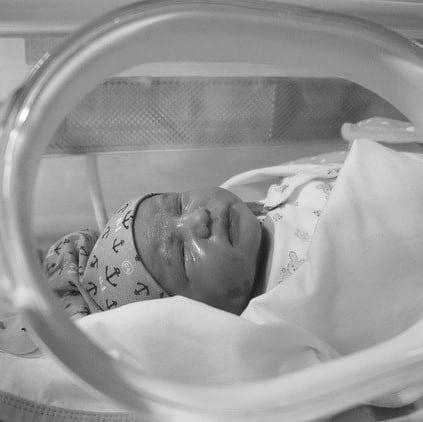A child’s life was recently saved thanks to ultra-ultra-rapid genome sequencing which provided him his rare disease diagnosis in just 13 hours.
The Human Genome Project began 30 years ago in effort to improve diagnosis time for those with rare conditions, converting sequencing into diagnostic data. Proper diagnosis is critical for patients to receive the right treatment. The faster this treatment is given, the better the chances of survival.
The rush against time is particularly critical for those who have seizures. Each hour absent of treatment can lead to brain damage. Epileptic encephalopathy occurs in over 1,500 genetic conditions. However, the treatment for each one of these is unique. Therefore accurate and timely diagnosis is critical.
Rush Against Time
The little boy whose story has made major headlines was diagnosed with autosomal recessive thiamine metabolism dysfunction, syndrome 2 (THMD2) in just 13 hours thanks to amazing innovations in healthcare, the quick thinking of doctors, and teamwork between different teams. You can read the full case of this little boy here.
The child was just 41 days old when his parents rushed him to the ER at Rady Children’s Hospital. He wouldn’t stop crying, and the parents were afraid he was facing what their daughter had faced 10 years prior. Her condition progressed rapidly, and she passed away before her 1st birthday.
The boy’s CT showed changes that worried the doctors, and an MRI showed white patterns in the basal ganglia. He had downward eye deviation, and an electroencephalogram revealed he was having brain seizures. He was moved to the NICU, all the while still crying.
This is where Mallory Owen, pediatric neurologist, joined the case. The medical director from Rady’s called her and explained the case, mentioning that ultra-ultra-rapid genome sequencing may be the best option. Within 13 hours, they had the results. The results showed THMD2, an extremely rare disease. This condition is caused by a defect in the system which transports thiamine from the bloodstream into the brain.
Thankfully, it is easily treated with oral vitamins. Within just 6 hours, his seizures stopped and he had stopped crying.
Although the long-term effects of this episode can’t be known yet, no baby has received treatment for THMD2 at such a young age.
Ultra-Ultra-Rapid
This fast form of sequencing has been in development for over 6 years. The standard sequencing takes weeks, and that can be too long for those facing extreme symptoms from an unknown condition. Without a proper diagnosis, the correct treatment cannot be given.
The rapid version takes less than 0ne week.
The ultra-rapid takes somewhere between 30-50 hours.
The ultra-ultra-rapid version is complete in just 13.5 hours.
Researchers are hopeful that this form of the test will be transformative for patients with rare conditions like it was for this little boy.
Since the case of the boy in 2020, this faster sequencing has been used for two other children. One of these babies was diagnosed with a rare mitochondrial disease as a result.
The doctors at Rady emphasize that although their center has become a place of excellence for this form of sequencing, it needs to be widespread at many institutions in order to be most effective.
The Cost of Ultra-Ultra-Rapid
Of course, new technology always comes with a price. As this ultra-ultra-rapid sequencing is still in development, federal grants are covering its funding, and this boy’s family did not have to pay for the treatment.
However, the price tag for standard sequencing is about 10,000 dollars so looking forward, we know the price tag for faster sequencing will be much higher.
Preparing for this in the future, legislation has been introduced to cover the test for patients both in California (AB 144) and in the U.S. Senate (S.2022).
You can read more about this miraculous story and ultra-ultra-rapid sequencing here.







